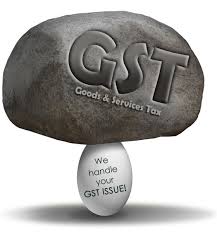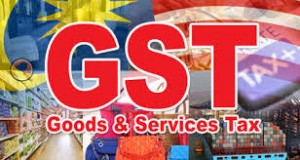Goods and Services Tax is one of the current hot topics in India. The government is planning to implement it to make tax-payers and tax-receivers life easy. So let us understand what it is and how is it different from current system of taxation in India in this explainatory article – ‘GST – a simple explaination’
Let us consider 3 groups of people – Manufacturers of goods (M), Retailers and service-providers (S) and Consumers (C).
We will first consider the current system of taxation in India.
M manufactures say ‘m’ rupees worth of goods. The retailer, when in need of the good, will buy it by paying ‘m(1+r)’ rupees to the manufacturer, where ‘mr’ amount is tax to be paid by the retailer in the form of excise/customs duty or any other tax (as r% of m) to Centre or State. Now, the retailer does not want to bear the burden of tax on himself. So, he adds ‘mr’ amount of price on the price of good to be sold to consumer (C). Plus he also wants to earn some profit on the good he sells, say an added amount ‘s’. Thus total cost price for C becomes [m+mr+s]. Now various taxes will be levied on the amount mentioned in the form of sales tax, service tax, VAT etc. , say ‘v’ % on amount. Thus, the consumer has to pay [m+mr+s]*[1+v] amount to retailer in total. This makes the total tax given to government as :
Tax revenue to Govt = Tax paid by Retailer + Tax paid by Consumer = [mr] + {[m+mr+s]*[v]}
We now consider what implementation of GST will do to above scenario.
M manufactures say ‘m’ rupees worth of goods. The retailer, when in need of the good, will buy it by paying ‘m’ rupees to the manufacturer, where no tax to be paid by the retailer in the form of excise/customs duty or any other tax (as r% of m) to Centre or State, at this stage. Now, the retailer can bear the burden of tax on himself, as long as he is convinced that the payment will come from the consumer. So, he does not add any amount of price on the price of good to be sold to consumer (C). But he also wants to earn some profit on the good he sells, say an added amount ‘s’. Thus total cost price for C becomes [m+s]. Now various taxes will be levied on the amount mentioned in the form of two broad classifications as Central GST (CGST) and State GST (SGST) , say a total of ‘v’ % on amount. Thus, the consumer has to pay [m+s]*[1+v] amount to retailer in total. This makes the total tax given to government as :
Tax revenue to Govt = Tax paid by Retailer + Tax paid by Consumer = {[m+s]*[v]}
Thus, with implementation of GST, consumers will benefit by paying an amount { [mr]*[1+v] } less in the form of tax. A clear cut advantage.
Click here for government certification in Accounting, Banking & Finance





5 Comments. Leave new
[…] I would like to discuss about the function and power of SEBI. It has a wide range of power and funct… […]
Again well explained about gst with simple language. Good Article.
Briefly wriien, very good
Mathematical route to explain GST is fantastic. Unique presentation, Nuruddin. You deserve a pat on the back for this.
Good effort!